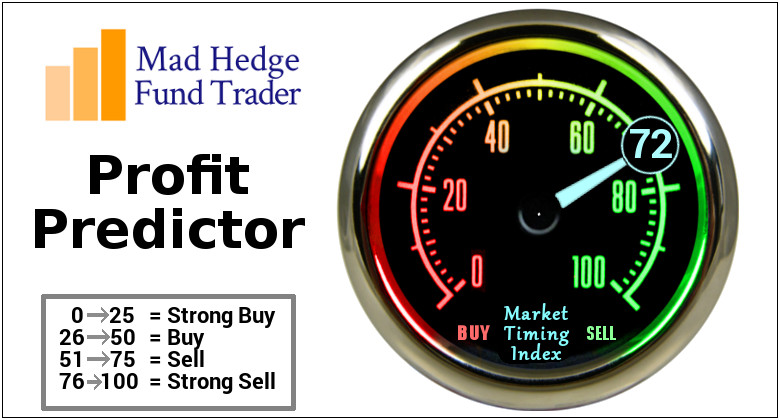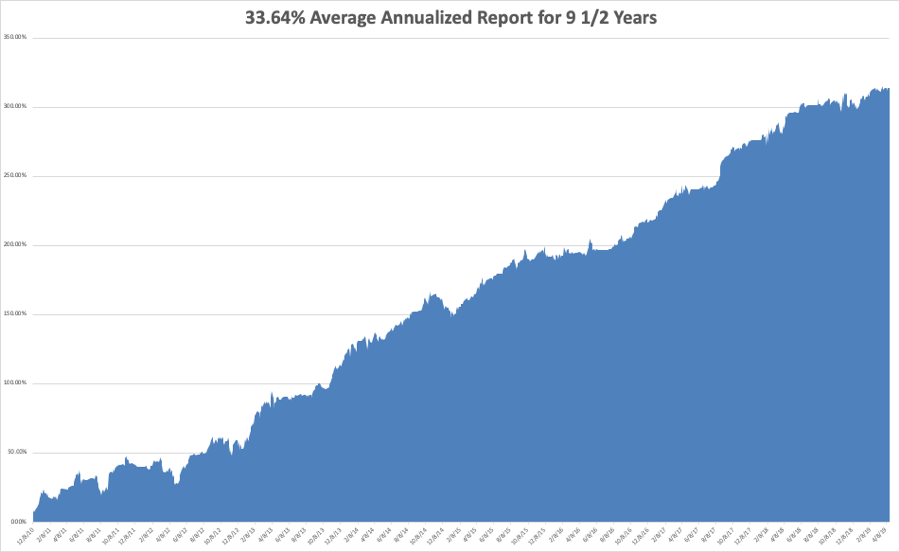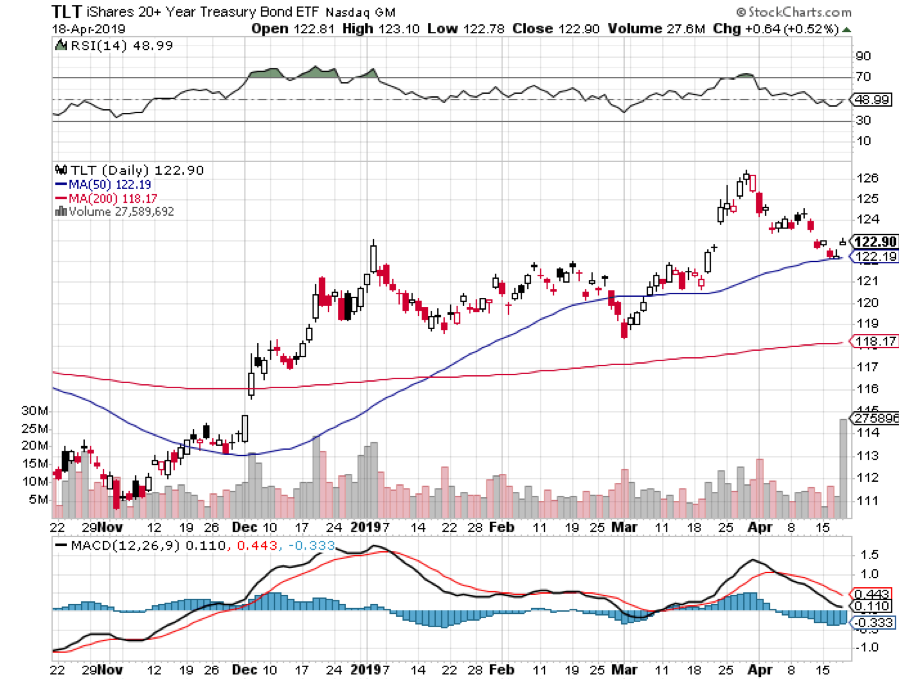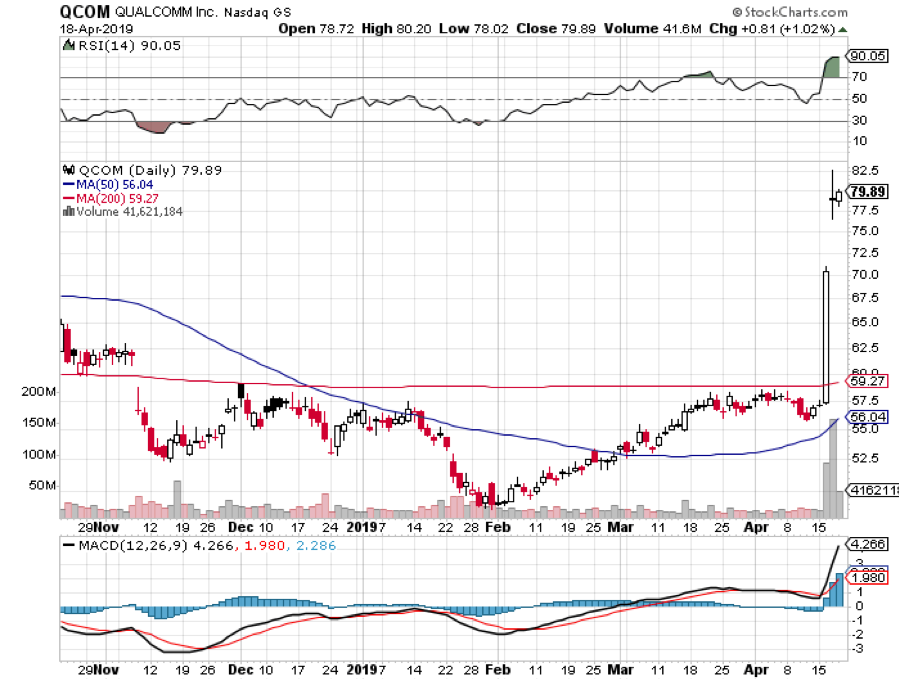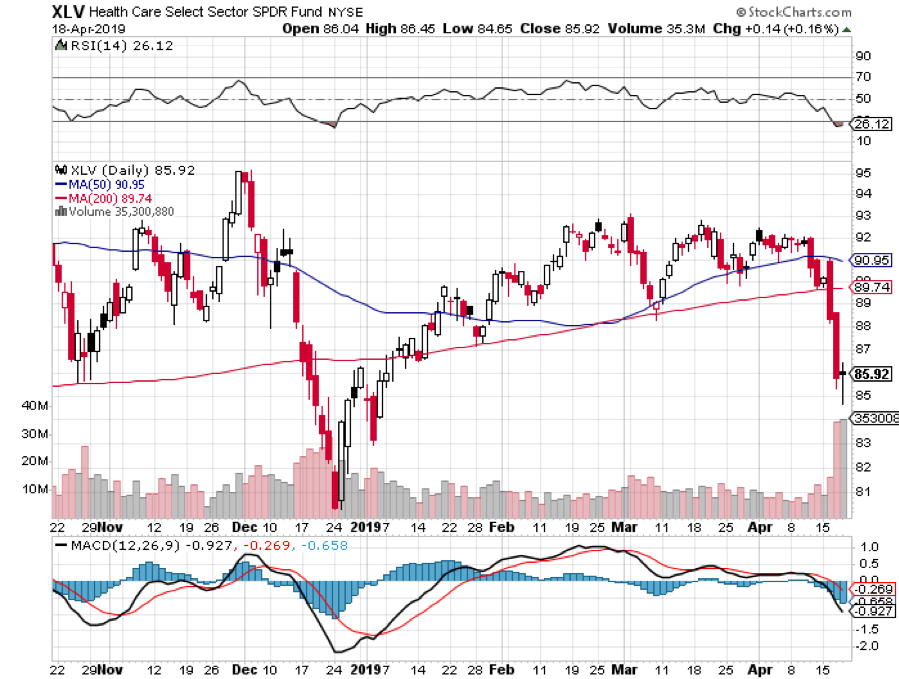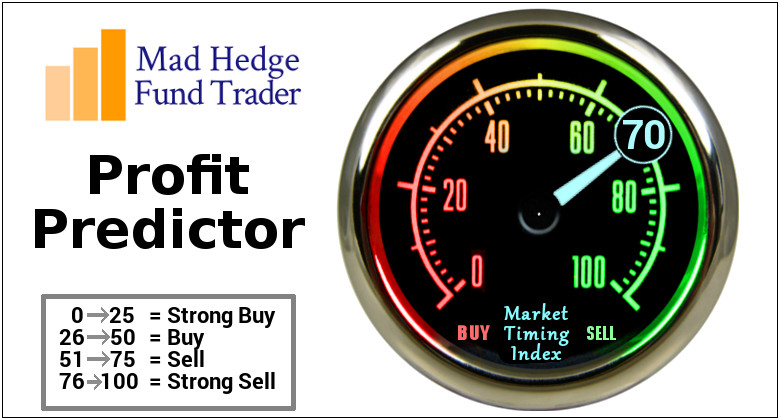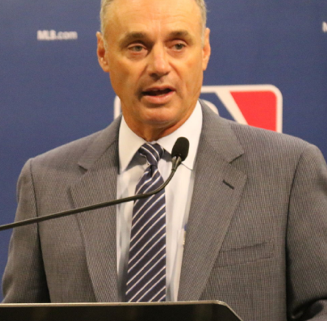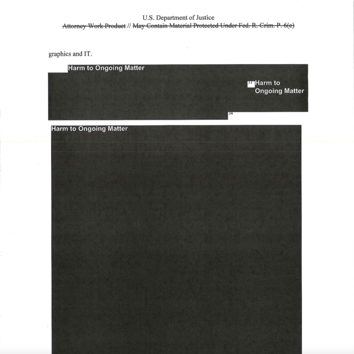While the Diary of a Mad Hedge Fund Trader focuses on investment over a one week to the six-month time frame, Mad Day Trader, provided by Bill Davis, will exploit money-making opportunities over a brief ten minute to three-day window. It is ideally suited for day traders, but can also be used by long-term investors to improve market timing for entry and exit points. Read more
Mad Hedge Hot Tips
April 22, 2019
Fiat Lux
The Five Most Important Things That Happened Today
(and what to do about them)
1) How Soon Does the Fed Start Raising Rates Again? The Fed cancelled all four rate hikes for 2019 because the stock market was crashing. Now it’s booming. Does that put autumn rate hikes back on the table? Only if the economy rebounds as well. Click here.
2) Uber’s Self Driving Car Unit Valued at $7.25 billion, as indicated by its latest VC investment from Softbank. This is going to be a huge business when it finally gets going, bigger than Detroit, but how to get in as a retail investor? Click here.
3) US Existing Home Sales Dive, in March by 5.9%, to an annualized 5.41 million units. Where is the falling mortgage rate boost? Keep avoiding the sick man of the US economy. Click here.
4) Trump Ending All Iran Oil Export Waivers, and the oil industry absolutely loves it, with Texas tea up 2.5%. Previously, the administration had been exempting a dozen countries from the Iran sanctions. More disruption all the time. The US absolutely DOES NOT need an oil shock right now, unless you’re Exxon (XOM). Click here.
5) Apple Bringing Out 5G in 2020, using QUALCOMM (QCOM) chips. Missed this one. I wondered why the stock was going up so fast. Buy (QCOM) on a dip. Click here.
Published today in the Mad Hedge Global Trading Dispatch and Mad Hedge Technology Letter:
(MARKET OUTLOOK FOR THE WEEK AHEAD, OR THE WORLD OF TWO’S),
(SPY), (TLT), (AAPL), (QCOM), (XLV)
(HOW TECH IS CHANGING THE ECONOMICS OF BASEBALL),
(MAJOR LEAGUE BASEBALL ISSUE)
Global Market Comments
April 22, 2019
Fiat Lux
Featured Trade:
(MARKET OUTLOOK FOR THE WEEK AHEAD, OR THE WORLD OF TWO’S),
(SPY), (TLT), (AAPL), (QCOM), (XLV)
We now live in a world of twos. Economic growth is at 2%. Unemployment rate is at 2%. Inflation is at 2%.
And we may soon be facing the cruelest two on all. The stock market may only gain 2% this year, next year, and the year after that. For that’s what a world of twos creates: a stock market that goes virtually nowhere.
This is why I have lately been advising my concierge clients to start checking out one-year CD rates at their local bank, which are now paying 3%-4%. In a world where the stock market offers 2% of upside versus 20% of the downside, you buy CDs all day long.
Certainly, my Mad Hedge Market Timing Index leads one to such a sobering conclusion, which now reads at a very high 70. Another way of describing this highly successful algorithmically driven indicator is that there are new longs now that have only a 30% chance of making money, while 70% of short positions should end up in the green.
That’s not enough for me to go either way. Above 80 or below 20 are the sweet spots for me. And topping processes can run as long as three months. We are only two months into the current one (there’s that damn number two again!).
Let me elaborate. On the one hand, I am loathed to buy a market that has just risen 22% in four months and has a multiple at a three year 18 high in the face of falling earnings during a global synchronized slowdown with a Volatility Index t $12. That’s why equity mutual fund redemptions are proceeding at record highs this year.
On the other hand, I’m not in a rush to sell short a market that has had all four 2019 interest rate hikes canceled and has seen $2.5 trillion in new liquidity pumped into the economy.
As a result, the rate of new Trade Alerts will slow down from Q1’s torrid pace. There’s just nothing to do. And yes, I can already hear the complaints coming. Of course, you expect Trade Alerts if you just paid $3,000 for a service that then tells you to do nothing.
But telling you to do nothing is far more valuable than telling you to do something that is wrong. There is no law that says you have to trade every day of the year. After all, you’re trying to pay for your own yacht, not your broker’s.
There are other services out there that DO give you Trade Alert a day and are even cheaper than mine. But they lose money hand over fist and don’t publish their results as I do. Caveat Emptor. You pay peanuts, you get monkeys.
There is one Goldilocks scenario that’s not impossible to unfold this year. Massive Chinese economic stimulus is working, which is why stocks in the Middle Kingdom have outperformed those in the US by 2:1. That strength spills over to Europe, which then ratchets up US multinational earnings and a sharp rebound in US stocks.
That’s why big tech has been leading the market all year, and why we have been running leveraged longs in that sector. It could happen, but I’m remaining cautious anyway. Being up 14% in three months MAKES me cautious, and I know that stock-only buyers made a lot more.
Earnings are coming in better than expected for Q1. It is looking like companies excessively cut forecasts during the dark days of December. But is it already in the price? Cut risk.
Bright US retail sales give the market a boost, up 1.6% in March, the most in 18 months. A rare positive data point on an otherwise dull economy.
Global PMIs are still weak, with dismal reports from Asia and Europe. The US is still the bright shining light on the hill. Bad news for US exporters through.
Home mortgage demand is soaring. It looks like an ultra-low 4.03% 30-year fixed rate mortgage is going to rescue the residential real estate market from the jaws of defeat this spring.
Broker earnings in free fall, as collapsing trading volumes take a bite. It seems investor faith in this rally is almost nil. Risk is high. Take profits you lucky bastard.
Oil hit a new 2019 high. OPEC discipline also hits a record. Gas at the pump will top $4.00 just as the summer driving hits and it's already there in high-taxed California. Maybe it’s time for a “staycation” this year? Take that long cross-country trip during the next global recession.
Apple (AAPL) and QUALCOMM ended their epic legal battle, over smartphone chip patent dispute. It finally became a high distraction of (AAPL). Buy (QCOM) on the dip.
The Mad Hedge Fund Trader treaded water this year, up 13.92% year to date, as we took profits on the last of our technology long positions.
We took profits on a six-month peak of 13 positions across the Global Trading Dispatch and the Mad Hedge Technology Letter services and will wait for markets to tell us what to do next.
April is so far down -1.50. My 2019 year to date return retreated to +13.92%, paring my trailing one-year down to +21.62%.
My nine and a half year return backed off to +314.06%. The average annualized return appreciated to +33.64%. I am now 100% in cash on both services.
The coming week will be the biggest for the entire Q1 earnings cycle.
On Monday, April 22 at 10:00 AM, we get March Existing Home Sales.
Kimberly Clark and Whirlpool report.
On Tuesday, April 23, 10:00 AM EST, we learn March New Home Sales.
Coca Cola (K) and Verizon (VZ) report.
On Wednesday, April 24, it’s a big day for earnings with Facebook (FB), Microsoft (MSFT), Boeing (BA), and Tesla (TSLA) reporting.
On Thursday, April 25 at 8:30 the Weekly Jobless Claims are produced. We also obtain March Durable Goods. Amazon (AMZN) and Intel (INTC) report.
On Friday, April 26 at 8:30 AM, we get the number we have been waiting for all month, the first Read on Q1 GDP. How mad will it be? Chevron (CVX) and Exxon (XOM) report.
As for me, I’m back out of my deathbed, finally catching up with a backlog of admin and on the lookout for new Trade Alerts. Health Care (XLV) is starting to look interesting, now that it has been slaughtered by the coming election promises of Medicare for all.
Good luck and good trading.
John Thomas
CEO & Publisher
The Diary of a Mad Hedge Fund Trader
While the Diary of a Mad Hedge Fund Trader focuses on investment over a one week to the six-month time frame, Mad Day Trader, provided by Bill Davis, will exploit money-making opportunities over a brief ten minute to three-day window. It is ideally suited for day traders, but can also be used by long-term investors to improve market timing for entry and exit points. Read more
While the Diary of a Mad Hedge Fund Trader focuses on investment over a one week to a six-month time frame, Mad Day Trader, provided by Bill Davis, will exploit money-making opportunities over a brief ten minute to three-day window. It is ideally suited for day traders, but can also be used by long-term investors to improve market timing for entry and exit points. Read more
Mad Hedge Technology Letter
April 22, 2019
Fiat Lux
Featured Trade:
(HOW TECH IS CHANGING THE ECONOMICS OF BASEBALL),
(MAJOR LEAGUE BASEBALL ISSUE)
Several experts and even agents lament that baseball’s free agency is broken and in need of an urgent overhaul.
I would argue that baseball is merely rejigging the inefficiencies of a system from a previous broken era – a reversion back to the mean.
Technology has forced teams to evolve to survive and baseball players are divided into winners and losers with most the latter.
The digitization of baseball has given the best free agents epic paydays while feeding scraps to the rest.
Baseball is a business - they are like any firm with annual revenues, expenses, operating costs, and short-term financial goals.
This trend has picked up pace with the recent infusion of Wall Street knowledge into front offices indicating a sea of change in how management views its costs and revenues.
Expensive decisions in baseball and most any professional sport boil down to the contract length and salary of whom they employ including the groundskeeper and these decisions are made from data.
The book Moneyball by Michael Lewis was the first domino to drop and the financial side of baseball is still feeling the after-effects.
The publication became a must-read for anyone associated with professional sports and baseball with its contrarian statistic theories which promote searching a database to take advantage of unique peculiarities.
Pro sports have never looked back with many other sports taking Michael Lewis’s lead and cross-pollinating his theories into hockey, soccer, and most other industries.
Baseball’s free agency has gone through the meat grinder.
Why?
Big Data.
Superstars such as Manny Machado and Bryce Harper are the best young talents rewarded with a yearly salary of $30 to 40 million per year.
Machado was able to score a 10-year, $300 million-dollar contract with a 5-year opt out clause with the San Diego Padres, and Bryce Harper was able to land a $330 million, 13-year contract which averages over $25 million per year with the Philadelphia Phillies.
Remember that baseball contracts, unlike football contracts, are 100% guaranteed whether a player breaks a leg or not, they just need to show up to the games.
If baseball needed an encore, LA Angels capped off the shopping spree by signing baseball prodigy Mike Trout, giving him the most lucrative contract in sporting history, a 12-year, $430 million contract.
It’s no shock that the recipients are around 26-year-old because data proves this is the optimum time to make a big splash and flash the cash.
Older players aren’t so lucky.
The mid-market free agent environment has cratered, a stark difference from the Machado, Harper, and Trout market.
The hoard of data has concluded that aging 30-something baseball players post performances that deteriorate in an accelerating manner therefore are high-risk financial commitments.
Multi-year contracts are a dying breed for players who are over 30.
Veterans who were once easily commanding multi-year contracts, on the back of a famous household name, in the vicinity of $5-10 million no longer possess this type of earning power.
Aging pros in their early and mid-30s have been deemed expendable and replaced by cheaper and younger talent who teams can financially control yet produce similar stats to the aging veterans.
This development originated from teams attempting to mitigate mistakes in giving big contracts to veterans who stop producing as they got older.
Being on the hook for years of dead money has been pain points for MLB owners.
In 2019, MLB teams have never been more profitable stemming from the overall league delivering record profits from licensing advertisement, television contracts, and attendance gates.
Let me remind readers that baseball earned over $10 billion in total revenue in 2018 translating into a rise of 377% since 1992.
The teams certainly have the capacity to pay veterans more, but data suggests that only ponying up for the best and filling out the rest with younger, inexperienced players is the most prudent way to putting together a team.
The average paycheck in 2018 was around $4.1 million, down $1,436 from the 2017 season hinting that data-based decisions are filtering down to the bottom line.
Adam Jones’s case who had years of success with the Baltimore Orioles as an outfielder is a sign of the times.
He grappled with an off-season attracting no offers until the last moment when the Arizona Diamondbacks offered him a 1-year, $3 million contract.
Jones admitted that he was ready to be sat at home on the couch watching his fellow ballplayers on tv if he hadn’t received the last second offer.
Jones is 33, a death sentence in the world of baseball statistics.
Data suggests that his performance will stagnate and become worse as he ages.
One-year contracts are the best he can expect moving forward.
As negotiations approach for the next collective bargaining agreement, veterans and owners are digging their heels in threatening a player strike.
But what these aging veterans don't understand is that this is just the beginning of technology permanently reshaping how sports are managed and how players are valued.
The top 1% of premium talent will continue to accumulate rich premiums to those of mediocre standard.
A massive hollowing out of the baseball middle class will continue to purge the ranks of veterans and give chances to cheap, young upcomers.
The youth have shown to replicate similar statistics of the mediocre veterans but for a fraction of the cost.
Many accuse teams of being anti-competitive, and teams in the league benefit from being a closed off nature spurning relegation and promotion.
Another contentious issue is the pressure to digitize the game because information suggests that baseball is not attracting new or young fans.
The average age of baseball fans is over 50 and creeping older every year.
I blame the slow pace of the game.
Examples are rife with pitchers being able to step off the mound multiple times before pitches, only to face one batter before being subbed out again, forcing viewers to wait for another 5 to 7 minutes before they can watch another pitch.
Content providers must be aware of viewers' shorter attention spans and adjust content models accordingly.
The league wants to implement a pitch clock, quickening the pace of the game, but the measure was rejected by the players in 2017 and 2018.
Players are resistant to new technology in the game, because of the fear it will reduce their value even more.
Umpiring is a pain point with the status quo unable to offer competent judgments on balls and strikes.
Technology offers an in-game on-demand analysis of the ball placement and some umpires are underperforming to the extent they are perverting the course of the game and the result of it.
It’s gotten so bad that some fans suggest the sport is rigged by umpires who attempt to uphold the rules of the game.
Eventually, sports will eliminate referees and only elite players will be able to play into their 30s.
Baseball will look vastly different as a future product, and my guess is that players above 30 will go extinct in 10 years.
BATTING AGAINST THE ALGOS
“I look forward to tapping into the power of technology to consider additional advancements that will continue to heighten the excitement of the game, improve the pace of play and attract more young people to the game.” – Said MLB Commissioner Robert D. Manfred, Jr.
Mad Hedge Hot Tips
April 18, 2019
Fiat Lux
The Five Most Important Things That Happened Today
(and what to do about them)
1) Bright US Retail Sales Give Market a Boost, up 1.6% in March, the most in 18 months. A rare positive data point on an otherwise dull economy. Click here.
2) Weekly Jobless Claims Hit New 50 Year Low, at 192,000, down 5,000 from last week. We are clearly in uncharted territory here. Is this the bubble low? Why won’t wages budge? Click here.
3) Union Pacific Beats. There may be some life in the old industrials yet, but only if you cherry-pick the best. Avoid US Steel (X). Click here.
4) Global PMIs Are Still Weak, with dismal reports from Asia and Europe. The US is still the bright shining light on the hill. Bad news for US exporters through. Notice that NASDAQ is down today. Click here.
5) William Barr Opines on No Collusion or Obstruction, says the attorney general cherry-picked for his views. What a surprise on the release of the 400-page Mueller Report where 20% of it is blacked out because of “harm to ongoing matter” which means 80 pages of pending prosecutions of the president. As predicted, the market impact is absolutely zero. This is really a news junkie’s game. Click here.
Published today in the Mad Hedge Global Trading Dispatch and Mad Hedge Technology Letter:
(SIX STOCKS TO BUY THAT ALWAYS MAKE MONEY),
(SPY), (IXUS), (EEM), (VNQ), (TLT), (TIP)
(NETFLIX’S WORST NIGHTMARE)
(NFLX), (DIS), (FB), (AAPL)
The Transparency is Stunning
Legal Disclaimer
There is a very high degree of risk involved in trading. Past results are not indicative of future returns. MadHedgeFundTrader.com and all individuals affiliated with this site assume no responsibilities for your trading and investment results. The indicators, strategies, columns, articles and all other features are for educational purposes only and should not be construed as investment advice. Information for futures trading observations are obtained from sources believed to be reliable, but we do not warrant its completeness or accuracy, or warrant any results from the use of the information. Your use of the trading observations is entirely at your own risk and it is your sole responsibility to evaluate the accuracy, completeness and usefulness of the information. You must assess the risk of any trade with your broker and make your own independent decisions regarding any securities mentioned herein. Affiliates of MadHedgeFundTrader.com may have a position or effect transactions in the securities described herein (or options thereon) and/or otherwise employ trading strategies that may be consistent or inconsistent with the provided strategies.

